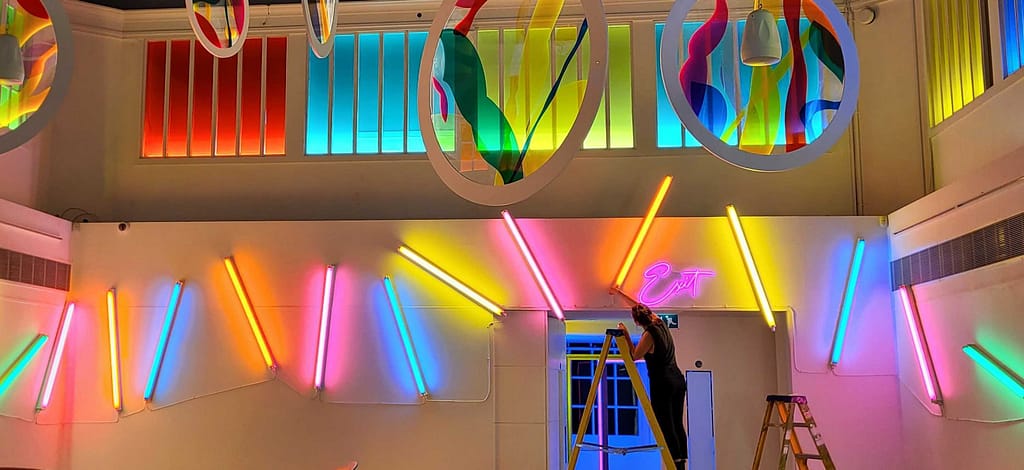
Whilst music festivals have been getting attention for their serious gender imbalances in performer lineups, behind the scenes, the teams who help deliver festivals such as audio and lighting crews have an even more serious gender problem.
For example the BBC found that only 13% of headliners at the UK’s top music festivals in 2022 were women. And beating that statistic by an unhealthy margin - just 5% of audio engineers are women.
The visible & invisible barriers to women and non-binary people in technical lighting and audio crews are manifold. From blatant sexism and harassment (within the music sector over 60% of workers have experienced sexual harassment), to assumptions of male competency, to gender pay gaps, and so on.
Bailes+Light director Benji Bailes has been working to improve crew diversity across all their projects. For Greenpeace at Glastonbury Festival they just recently hit an important milestone - only 30% of the 21 people working on the lighting team were men. Over 50% were women, with the remainder being non-binary.
The 2022 crew at Glastonbury reflects the outcome of successful networking across other Bailes+Light projects. “We still have a lot of work to do, but have a number of highly experienced industry professional women to call on for our projects now”, says Bailes. “I think it reflects a lot of the work being done in various colleges up and down the country.”
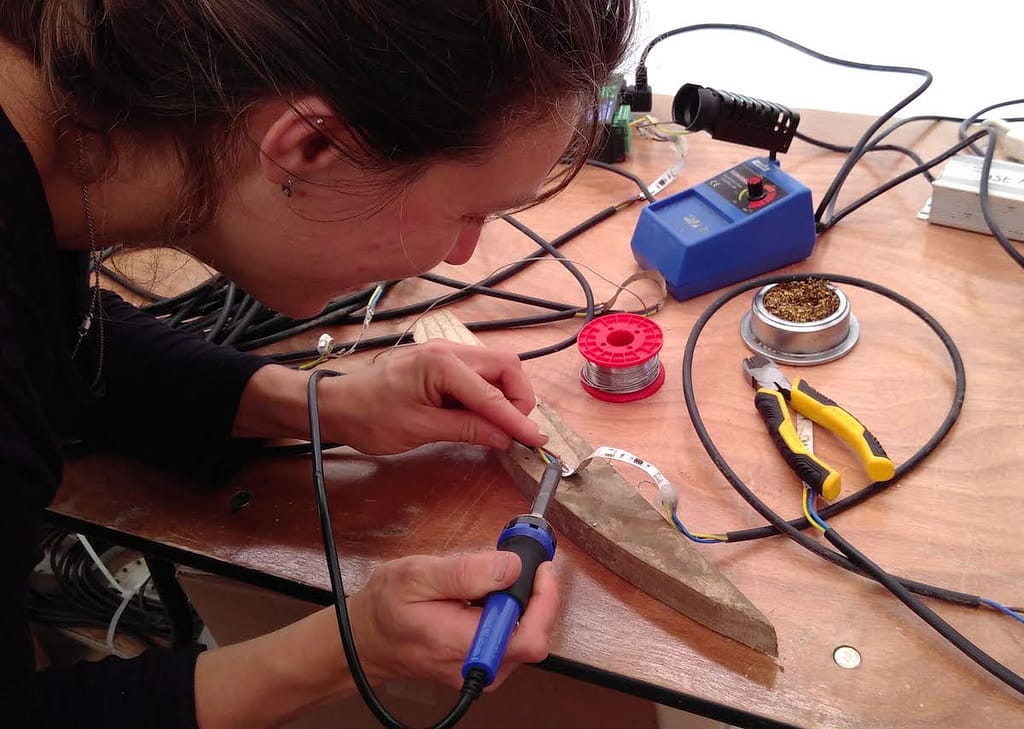
Building a team based on gender equality is not only about equity, it also produces a better experience for everyone: “As a non-binary person I have often felt more comfortable working in teams made of varied and flourishing individuals, away from the dominant masculine culture of traditionally-shaped crews”, says Bailes. “A more diverse team - be it across gender, race or socio-economic status - brings a more true-to-life work culture in an environment that encourages participation of many voices.
only 30% of the 21 people working on the lighting team were men. Over 50% were women, with the remainder being non-binary
While at Bailes+Light we can be immensely proud of our record on gender, we have a long way to go to meet a more true-to-life representation across our entire workforce.
We thought we’d share a few tips to help other companies on their way.
It might sound obvious, but you need someone who can do the groundwork and hold the process. Our D&I lead spends a significant amount of her job researching and reaching out to people and organisations. She works regularly with directors and makes recommendations on how to approach core business activity in new ways. When considering bigger projects, it's safer for this to be a full-time role in itself.
With women still representing such a small percentage of the technical workforce, recruiting might seem an impossible hurdle. “If it seems like it’s hard to find people, then keep looking! Don’t be afraid to try working with new people you don’t know very well. Consider what biases you might hold yourself about people and abilities then work to undo them. It’s super rewarding and you very quickly realise that you are able to create spectacular experiences and features with diverse teams”, says Bailes.
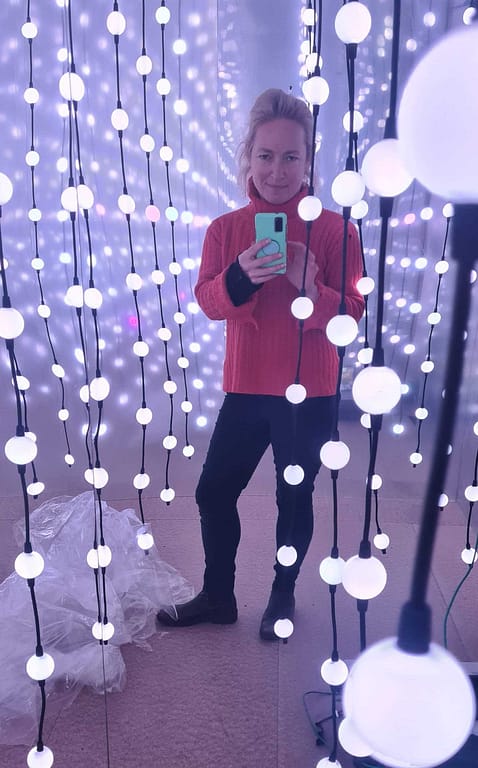
Examining and rewriting your job adverts and crew callouts can be an important place to start. There are plenty of resources available to help with gendered language. A simple Google search of ‘gendered language checker’ will set you on the right course. Another barrier might be the way the job description is written. When it comes to a full job recruitment process, be careful what you put down as an ‘essential’ requirement and instead angle a JD in a way that people from all backgrounds can genuinely engage with. Some people may have the skills you need but not necessarily feel confident in applying - make a point of widening the potential pool.
Where you recruit is also important. While it may be quick and easy to post a job on your own social media channels, this only leads to employing people within your own networks. Bailes+Light Diversity and Inclusion (D&I) lead Eva Arnold has been working to improve hiring practices across the business. “Having the right ethics isn’t enough”, says Arnold. “You need to put time - and therefore company money - into looking for job boards that target diverse groups and organisations who specialise in promoting jobs to more diverse audiences. Of course the good news is that when you’ve done this once, then you have the tracks to go back over and the relationships are already established next time you come to recruit!”
Setting targets and being persistent in pursuing them has been integral to achieving gender equality in the Glastonbury crew. “I will always prioritise someone who is not male over someone who is - assuming they have comparable skills. Call that positive discrimination if you will”, says Bailes. “I won’t stop looking for crew members if I am missing my target. Sadly this has meant that I have had to drop experienced technicians from the project to make space, which obviously has real-world consequences, but these hard decisions in the long term will create a more representative working environment for everyone if handled sensitively”.
Festivals have a long tradition of relying on volunteers. This creates economic barriers to genuine diversity and inclusion and skews teams toward white, male and middle class workers. “Inclusivity comes down to money.” says Arnold, “If you want all kinds of people to work for you, then you need to pay them competitive rates, rather than making unspoken demands that they resource themselves adequately to work for lo-to-no wages. Budgets need to reflect that”.
Implementing a gender pay gap report can also be important to address more hidden imbalances such as recruiting more women into voluntary, or lower ranked (and therefore lower paid) positions.
Within the Greenpeace at Glastonbury project, Bailes has persisted with blanket negotiations with senior management to achieve a more transparent pay model and higher wages for the crew. “This was always previously the most tricky barrier to recruitment”, says Bailes, since festivals traditionally ask people to do a lot of volunteering. To make the project fair and attractive to more people, Bailes+Light removed almost all of the ‘voluntary’ requirements that were imposed on our Glastonbury crew at large.
The Greenpeace build was one of the most positive and lovely experiences I have ever had on a festival/site build. The whole [work] environment was so welcoming and considered and I felt really looked after, supported and encouraged by everyone I worked with
Greenpeace at Glastonbury lighting team member
Creating a positive team culture is key to retaining team members. Much of this can be created by having a representative management team. “Ensure women, transgender and non-binary/gender-queer people are in positions of leadership and ensure that the entire team is well supported”, says Bailes. The lighting team for Greenpeace at Glastonbury include a non-binary department head, and female crew chiefs for both the build and the event.
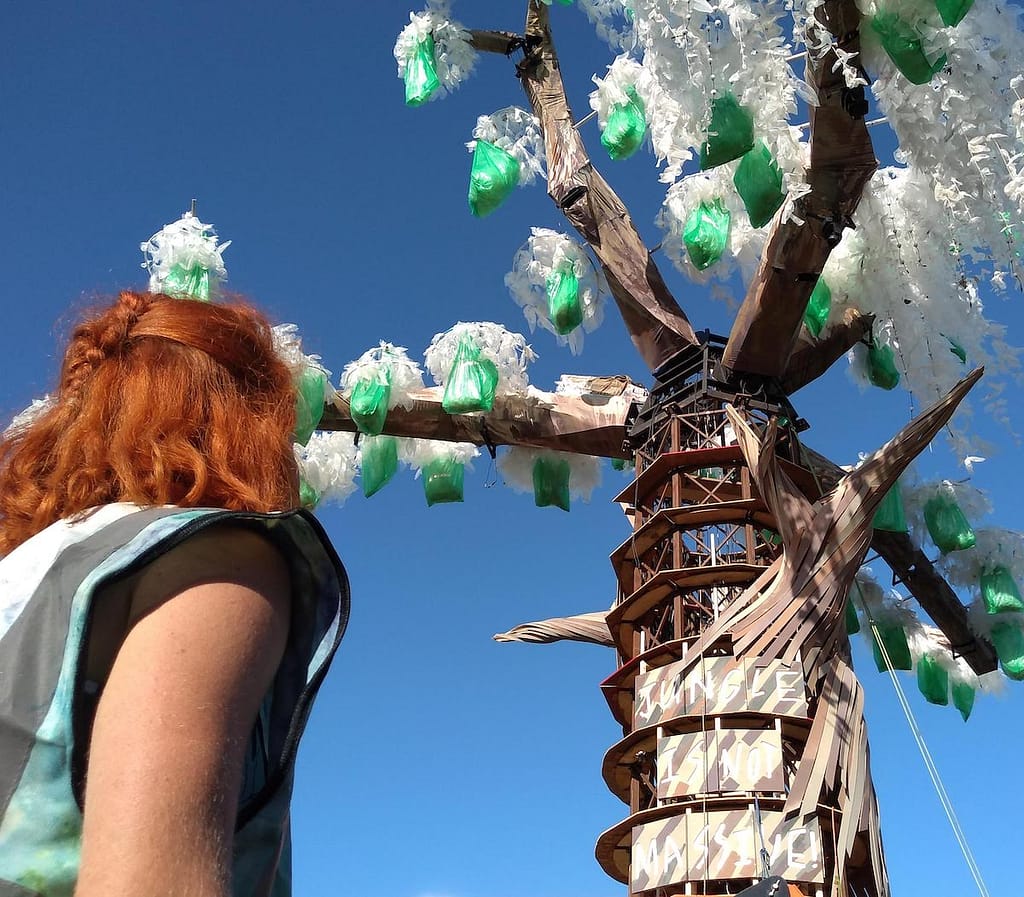
You can only help create an inclusive culture if you give everyone the space to contribute. Create space for everyone on your crew to have a voice, whether through regular check-ins as a team or on a one-to-one basis. Managers and supervisors shouldn’t shy away from calling out misogynistic behaviour and challenging problematic individuals. Let diverse perspectives flourish.
Ensuring people are paid a fair wage for the work they do, wide and intentional recruitment, creating a supportive team culture and employing positive discrimination not only leads to gender equality, it leads to real-world representation. “The starting point is being prepared to pay more and to do the work to address the imbalance”, says Arnold. “This is where the intersectionality of diversity plays a positive role - it becomes about workers rights, which are often eroded in festival and some event settings. It’s those rights that are the paving stones of diversity.”
Five summers ago, I first discovered the wonders of the Wood Wide Web. During our creative design period for Glastonbury Festival a colleague shared ‘From Tree to Shining Tree’, a Radiolab podcast which told the story of mycorrhizal networks: the connections between trees through underground fungal networks.
This was a fascinating story of collaborative biodiversity and symbiosis. It’s a story that would flit through my mind over the course of the next three years.
As an immersive lighting designer, I am often inspired to bring my passion to projects that communicate issues I care deeply about. I’ve used light and sound to encourage collaboration between humans and to campaign for the protection of nature.

As a member of the design team for Greenpeace at Glastonbury I’ve used lighting and creative technologies to involve audiences in important stories about human interaction with nature and was keen to develop these ideas and technologies further. A festival, however, isn’t a great environment to develop new technology. Water and electronics don’t tend to mix well. I needed a little time and space to develop these ideas and technologies further and to focus on them in the level of detail I would have liked.
Fast forward to 2020. With shows and festivals cancelled and the whole world staying at home, I finally had the time to think, play and dream. I wanted to experiment with the tools I have as a lighting designer to take people on a journey - and also give them the freedom to explore and discover an adventure of their own.
I got chatting with artist Poppy Flint, who asked me to help illuminate some tree roots for an exhibition. In this installation, participants would enter into an underground world - roots stretching out above their heads.
Poppy had a strong vision of leading people into a space that would move at a different pace to humans. She wanted to create an experience that would produce a sense of awe at the natural world, and simultaneously a sense of unease with our consumptive human relationship with the environment.
The story of the Wood Wide Web and mycorrhizal networks seemed like a perfect vehicle for the creative uses of technology I had been dreaming up. Could this be an opportunity to put some of my ideas into action? Poppy was game!
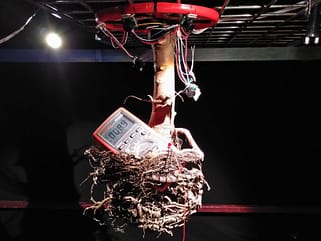
At the time, I had been playing with proximity sensors and contemplating how people interact with light and objects that are illuminated. In nature, plants communicate with each other and react to the proximity of friends or predators. How might we express these communications and reactions with light?
We felt that the mere existence of another life form - this time a human - in the underground domain would cause the roots to respond. I mocked up a root, sensor and light so it would get brighter as people approached it. We could expand on this first step and trigger other events such as sounds and atmospherics based on how close people came to the root.
Trials with individual sensors worked to some extent, but it was difficult to capture people’s movement over a large area. I had been using infrared (IR) motion sensors from above to achieve track movement, but within this low, ‘underground’ installation, there wouldn’t be enough space to capture reliable data. My colleague, Dan, suggested a different approach. We could plot a map and trace a person’s movement using two cameras
A bit of trigonometry and some coding, and voila! We could pinpoint the precise location of people in our installation, and their proximity to the roots and mycelium therein. This gave us the opportunity to develop a story that responded to people’s exploratory movements.
The human could now be the protagonist of the entire piece.
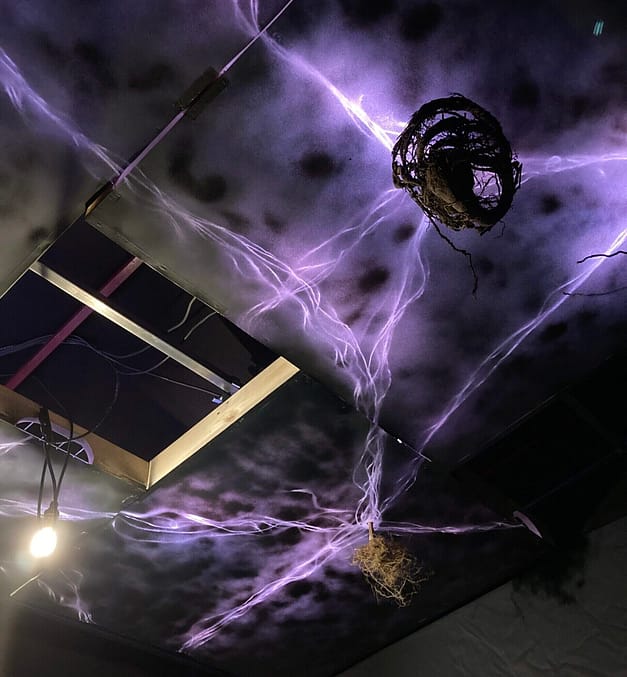
Plants help each other thrive by sharing nutrients. They can warn each other of threats such as insect predators. The mycelium of mycorrhizal fungi (the webs of fungi underground) pass on these messages and compounds, weaving their tendrils within, between and around plants and exchanging nutrients for their own survival and growth.
In our installation, I wanted to represent mycelium and the sharing of nutrients and signals with light. I’ve always struggled with the idea of light for light’s sake. I like light to enhance settings, sculptures or objects, not dominate them.
By representing these signals, light became an integral part of the narrative, rather than a separate element used to enhance the space.
Illuminating the intricate beauty of the roots themselves was also an important part of the installation. By playing with depth and shadow I could make the hairs of the plant glisten and the hairs of the audience stand on end.
Sound would also be an integral part of this underground journey. We worked with friend and sound designer, Lex Kosanke, who was keen to get involved. Lex helped us make sound a fundamental element of the narrative by giving each root a unique sound identity.
The result was ‘Underfoot’ (formerly ‘woven // dissonance’), an interactive audio-visual journey beneath the forest where participants create their own journey to explore their connection to nature.
Here in 2022 it still feels like I am part way through this underground adventure. We still have so much to learn and share, more stories to tell and people to inspire. I don’t yet know how this project will develop, but being able to encourage others to learn about and celebrate biodiversity and symbiosis drives me forward. I hope that we can build on our installation to create a fully interactive audio-visual experience that inspires many more people to respect and treasure our natural world.
You can watch a video made of the installation below.
We’re immersive lighting designers - it says so under our name. Whether it’s immersive theatre, dining or some other new-fangled experiential thing, we’ve lit all sorts. In fact, we’ve just finished work on The Great Masked Ball - a beautiful immersive performance of Swan Lake.
During The Great Masked Ball and other immersive projects, we’ve worked out a few tricks to lighting adventures through unusual spaces. Keeping sets sparkling, actors lit, and audience members able to see afterwards might seem tricky. But with any luck our secrets might just help pull it off…
Immersive experiences are essentially collaborative. The lighting designer should be part of the design process and vice versa. To give an environment the right feel, you need to consider all lighting elements from the outset.
This is also handy for practical reasons. It gives you the ability to hide cables, install fixtures discreetly within the set and saves time on the installation (and therefore money!).
If you’re unsure what ‘practicals’ are, we’re talking light props! Pieces performers can use that will also help light a scene. Lanterns, candles, wands - anything that glows can really carry the action and pull the audience’s focus.
Performers can also use practicals to light themselves. This reduces the number of overall lighting fixtures needed, keeping performers visible as they roam throughout spaces.
Lighting needs to compliment the set and not feel intrusive. It should make an audience feel more immersed, not distract them.
But what if you need to focus the audience’s attention on a particular feature in the space to help carry the story?! Then add in fixtures for this purpose and program in any lighting changes you need.
Even when you’re recreating naturally lit spaces, focus the light so it doesn’t bounce everywhere. Too many reflections will flatten everything out and leave it feeling a bit clinical. Eugh. Also - and this is one of our absolute best super top secret tips - try playing with shadows to create some interesting textures.
It’s immersive performance. You’re putting an audience inside a set, and then bringing in performers. These performers may need to be well lit for the scene. Unfortunately, you’re pretty much guaranteed to spill light in at least somebody's eyes. Fortunately, we’re here to tell you that that’s ok. Just build the light into the experience - whether as a practical or hidden within something else.
Immersive events are often ‘in the round’, with audience members positioned all around the action. This forces creativity (it’s also a bit of a nightmare - sometimes I wonder if I chose the wrong profession…).
But the point is, you need to be inventive with how you light people. Take the traditional rules and turn them on their head. For example, if your audience is low down, you can light across the space. This might just mean they leave with their vision intact.
Sadly, it’s impossible to avoid daylight scenes completely. The designer of your immersive experience might need a scene that takes place in brilliant clear daylight (and commonly for us in something resembling a 6'x6' box... argh!). If this is the case, you’ll just have to get good at it.
Understand that daylight is made up of multiple light sources with very different colour temperatures. The sun is visible to us at around 3500 Kelvin. But a clear blue sky is closer to 7000 Kelvin. These temperatures combine to make up the light conditions we see in the outside world. Have I lost you yet? This might help.
Of course, it's far easier to take the experience outside into actual daylight. But then I’d be out of a job...
Scenic painters love to do their thing in light reminiscent of the final look of the experience. It doesn’t need to be 100% perfect. But the wonderful artists we’ve worked appreciated working in conditions similar to the final space.
This means they know their hard work isn’t going to be washed out or distorted in its final setting. Help them do their job and they will love you forever.
To use an extreme example - you wouldn't want to paint a UV portrait in non-UV light. You’d be working blind!
Immersive experiences are all about engaging audience members as much as possible. Interactive elements are brilliant for that.
There’s a range of kit available that can give the audience control of the lighting and other elements in a space. That said, it can sometimes be a bit tricky to get everything to work together reliably. When I can't find the controls I'm after, I normally ask my technical guys to make something up. Which is luckily something they’re brilliant at.
Here’s a couple of ideas to try: use game-show style buzzers that control everything in a room. Or, a bit trickier – try pressure sensors that react to the audience’s movement and encourage participation (you can see some this stuff in our work on Chambers of Flavour v2).
Festival season is right around the corner! We’re about to head off for another year lighting the wonderful Fire in the Mountain in Wales. Some of our best and most enjoyable work has been been on outdoor events. But it hasn’t all been plain sailing.
Some lessons we’ve had to learn the hard way. Others we’ve picked up from noticing other people doing stuff badly, again and again. Here are the precautions we take to make sure the lights stay on, the band keeps playing and the cash registers keep ringing.
If you’re getting your power from site, you need to know: 1) where the generator is, and 2) where your breakers are. Sometimes everything just goes off. This is often because of the main breakers. If it is, you need to get the Sparks to have a look.
It helps if you’ve already made friends with them. It costs nothing to make the Sparks a cup of tea. They’re busy people, but if you’ve made an effort to get to know them, you can often skip some of the queue!
Oh, and don’t mess with their generators or breakers. It will not make them happy.
If you’re running your own generator, designate someone to make sure it’s always full of fuel. You’d be amazed how easily wires get crossed over this. Don’t be another case of: “I thought you’d checked it!” “But I thought you had!” … and then everything goes dark.
Something will go wrong, it’s bound to happen at some point. Make sure when it does, essential services don’t go down too.
Front of House needs to be on its own breaker, so the whole lighting desk doesn’t lose power. And make sure the tills are on their own breaker, so people can buy beer no matter what happens.
It doesn’t really matter if a handful of lights turn off for ten minutes while you track down an issue. But if the crowd can’t get beer then they’ll leave and the bar won’t make any money. And that is a problem.
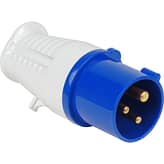 4. Only use outdoor rated plugs
4. Only use outdoor rated plugsThe standard plug to use in outdoor settings is 16A CEEFORM. You’ll see them everywhere at outdoor events. Stick to these if you need outdoor power.
Don’t use standard 13A plugs for anything outside. They’re okay under cover, in marquees and the like. But water has a habit of running under side walls. Mini-rivers running through tents are not uncommon - so keep plugs off the floor.

Every light you install outside needs to have the right IP (Ingress Protection) rating. It’s no good sticking an indoor fixture outside. For one thing, it’s dangerous. For another, it will most likely break as soon as it rains. This extends as far as PAR cans.
Also, don’t forget that your fixture is only water-tight if the cable glands are secured tightly and all the covers are correctly screwed down. A fixture’s IP rating is only as good as its glands are tight.
CEEFORMs need to be oriented horizontally to be waterproof. If they’re in any other orientation, water will run down the cable and fill up the plug. You can actually tell the ones that are full of water by giving them a shake and hearing water sloshing around inside.
This principle applies to all outdoor fixtures, water can run down the cable and sneak in past the gland. So make sure all glands are at the bottom of cables.
The DBO button is on the lighting desk. It stands for Dead Blackout. I often find myself wondering why such a button would even exist. It’s shockingly easy to slip and press it inadvertently. Or you might get a text message causing your phone to vibrate and slip down onto the button (which actually happened once during a live TV broadcast...).
In my experience, the DBO button is nearly never useful. Fortunately, you can disable it on the lighting desk. You just might save some red faces if you do!

Don't make sockets sad, like this.
You’d be amazed to what lengths people will go to charge their phones. They’ll crawl under stages or behind bits of set to find the holy grail: a 13A plug socket. They don’t really care what they unplug, and unplug they will! Bar staff, artists, DJ’s, build crew, no one is innocent of plug-mania.
The only real way to remedy this is to make sure there are enough sockets in the green room for everyone’s chargers. I know you’re probably running short of 16A to 4-gangs as it is. But you’ll be glad you put those extra sockets in. Trust me.
We once lost an awful lot of lighting circuits in our Glastonbury field after someone ‘borrowed’ a power socket to charge their phone. Grumble!
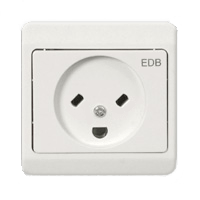
Make them happy, like this!
No matter how many “mobile phone charging only” signs you put up, someone will need to dry their hair before they go on stage. Or the stage manager will magic up a kettle out of their bum bag. Or someone (who you will equally love and loathe) will bring a coffee maker.
Things that heat stuff up draw loads of electricity. A kettle will suck up three quarters of your 16A supply, a coffee maker even more. So build in contingency. Make sure you’ve allowed an extra 13A wherever there’s a backstage facing 13A circuit you can’t afford to lose.
That way you can be sure when the coffee machine is brewing at the same time as someone is drying their hair, only the greenroom turns off. Not half of your stage.